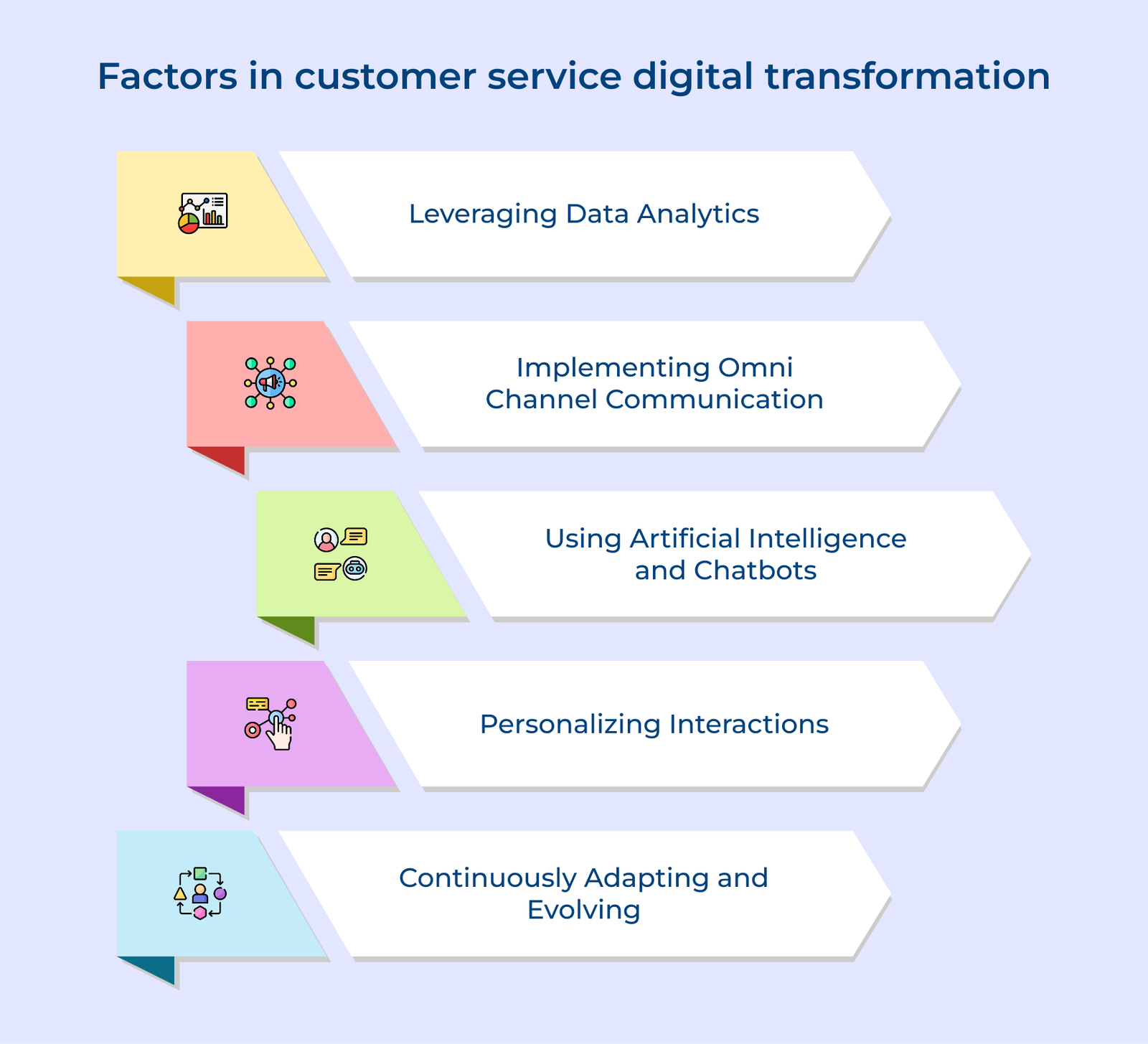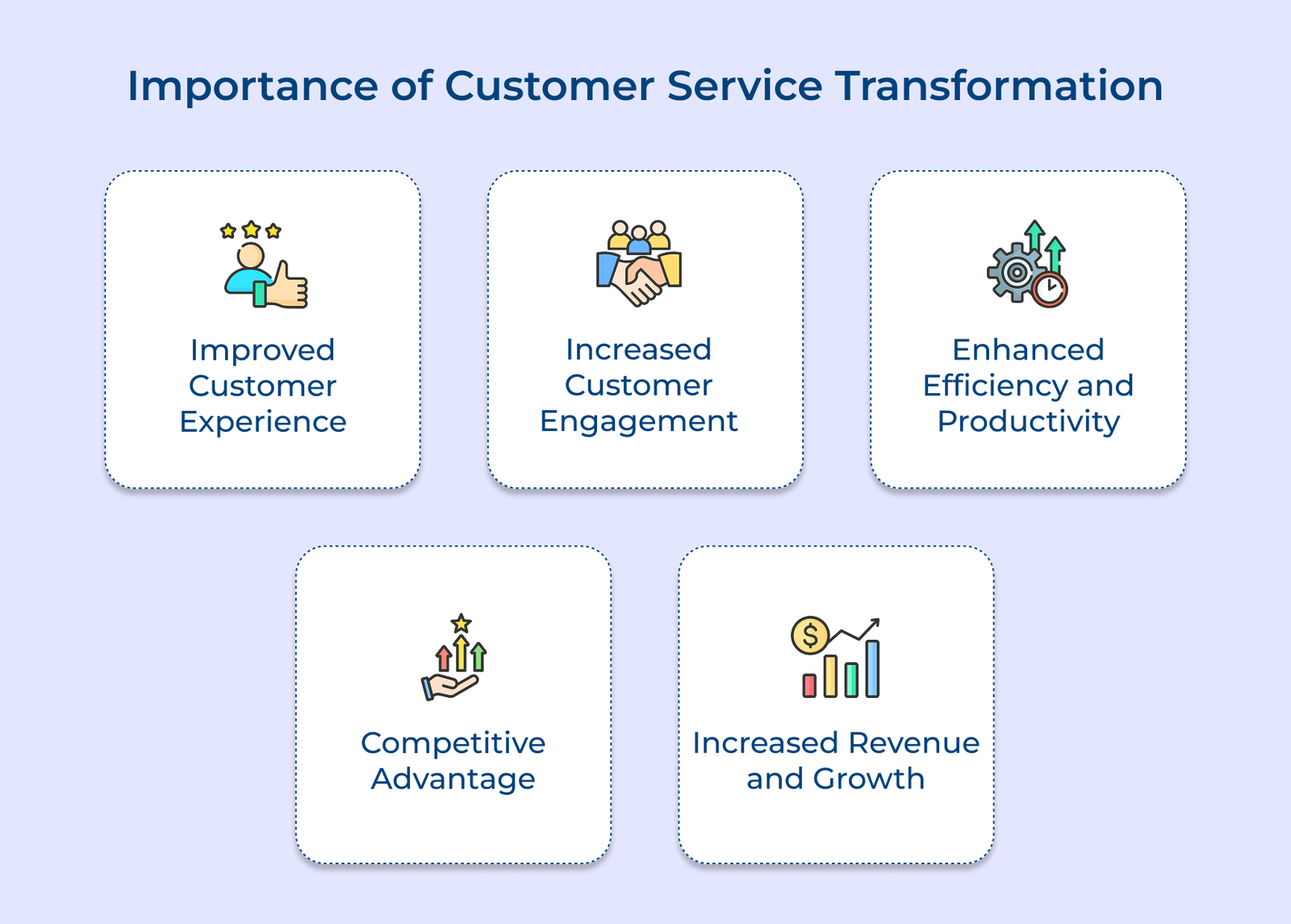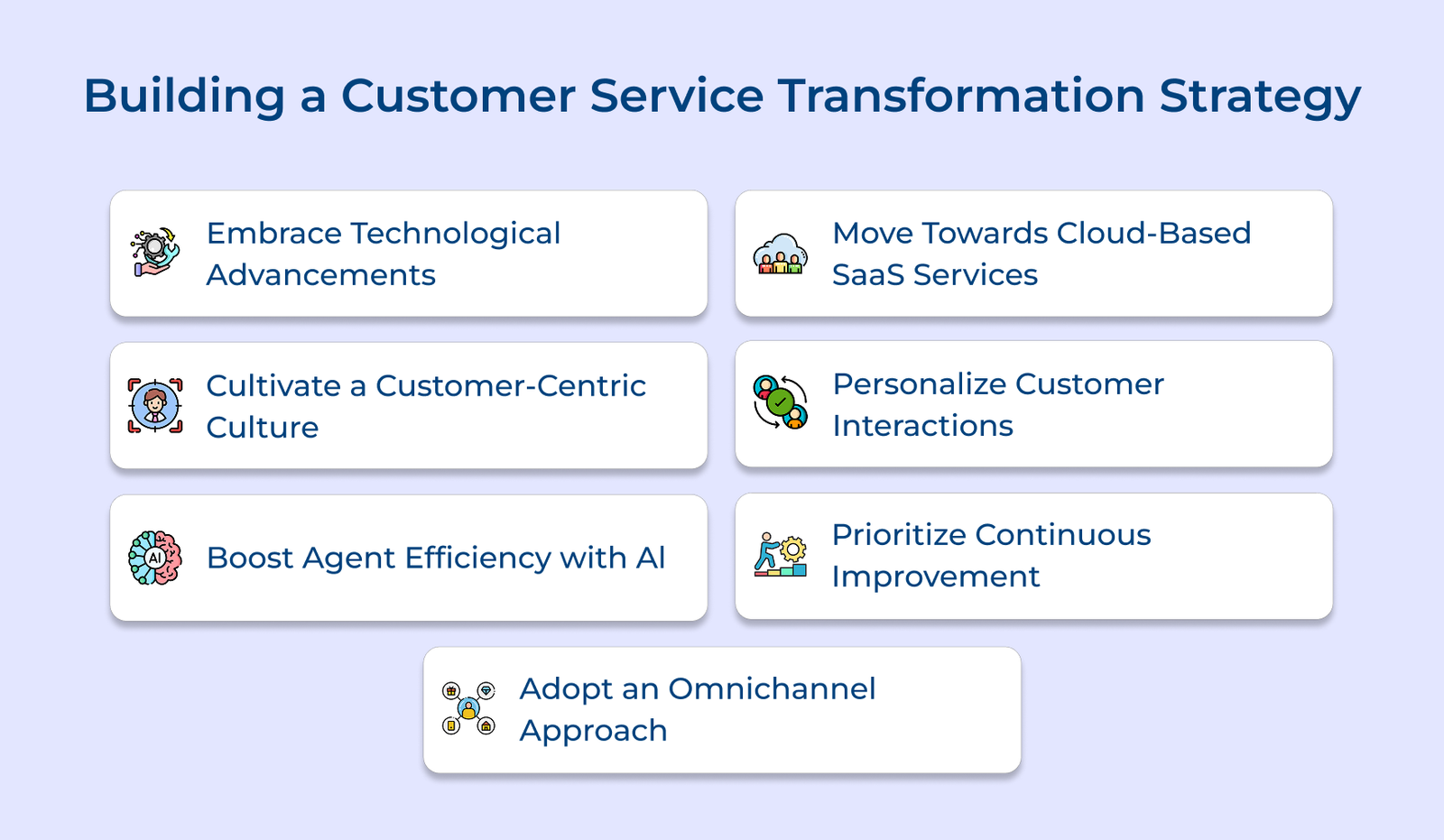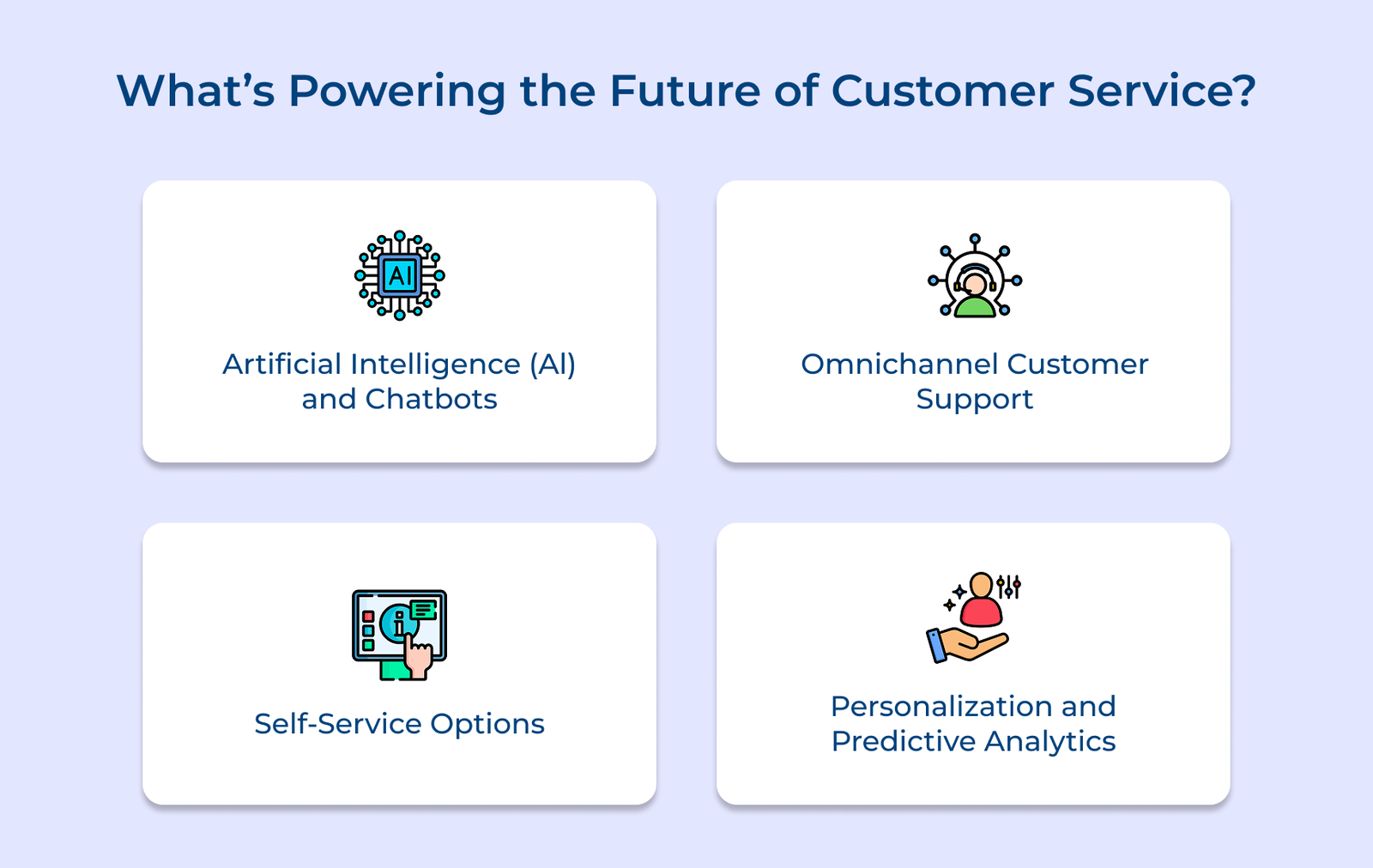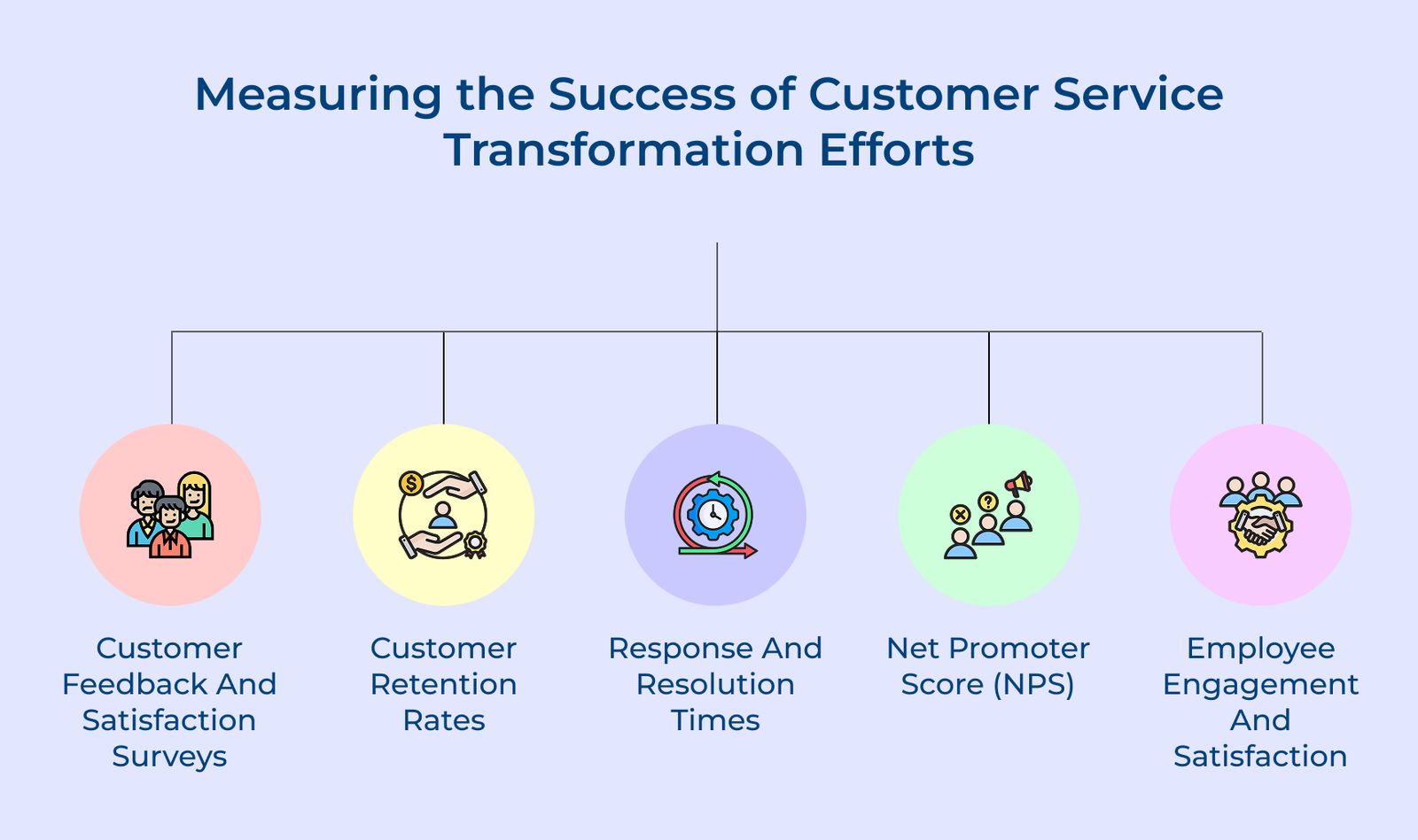1. Embrace Technological Advancements
Embracing technological advancements is essential for businesses looking to bring about customer service transformation. Adopting new technologies can help businesses streamline their operations and improve customer experiences.
One effective strategy to bring about customer service digital transformation is to embrace technological advancements. It involves integrating cutting-edge technologies such as AI, chatbots, augmented reality and virtual reality into your customer service processes.
Pro tips:
- Stay updated on the latest technological trends and advancements in the customer service industry.
- Invest in training your employees on how to use the technologies effectively to enhance customer service.
- Continuously gather feedback from customers to understand their needs and tailor the technological solutions accordingly.
2. Cultivate a Customer-Centric Culture
Cultivating a customer-centric culture within your business is key to achieving success. You can greatly improve customer satisfaction by focusing on the needs and wants of the customers. One effective strategy to transform customer service is prioritizing customer feedback and incorporating it into your decision-making processes.
A great use case for the strategy is the online retail giant Amazon. Amazon is known for its customer-centric approach, constantly listening to customer feedback and making improvements. It has helped Amazon become one of the most customer-friendly companies in the world.
Best practices:
- Encouraging all employees to prioritize customer needs and always strive to exceed customer expectations.
- Empowering employees to make decisions that benefit the customer, even if it means going above and beyond company policies.
- Regularly analyzing customer feedback data and using it to drive continuous improvement within your business.
3. Boost Agent Efficiency With AI
An effective customer service transformation starts with utilizing artificial intelligence to boost agent efficiency. Businesses can streamline processes, improve response times and enhance customer satisfaction by incorporating AI technology into their operations. Implementing AI in customer service can reduce costs by up to 30%.
AI-powered tools can assist agents in handling customer inquiries more efficiently by providing instant access to relevant information and automating repetitive tasks. One use case for implementing AI in customer service is chatbots. The automated tools can handle a high volume of inquiries simultaneously, providing quick responses and solutions to customers.
Ways to implement:
- Invest in AI technology that integrates seamlessly with your existing customer service platforms to maximize efficiency.
- Provide training to agents on how to effectively use AI tools to enhance their performance and improve customer interactions.
4. Adopt an Omnichannel Approach
Adopting an omnichannel approach is one of the most effective strategies to bring customer service digital transformation to your business. An omnichannel approach involves providing a seamless customer experience across multiple channels such as social media, email, live chat and phone support.
Businesses can better engage with their customers and improve satisfaction by implementing an omnichannel approach. The strategy allows customers to interact with a business on their preferred channel, leading to increased customer loyalty and retention.
How to implement:
- Invest in a centralized customer relationship management (CRM) system to track customer interactions across all channels.
- Provide consistent messaging and branding across all channels to create a cohesive customer experience.
5. Move Towards Cloud-Based SaaS Services
Moving towards cloud-based Software as a Service (SaaS) services is an effective strategy to incorporate customer service transformation into your business. Utilizing cloud-based SaaS solutions can help businesses streamline their customer service operations and enhance customer experience.
One example of how the strategy can benefit a business is by enabling remote customer service teams to access necessary tools from anywhere, at any time. The flexibility allows for quicker response times and increased productivity, leading to higher customer satisfaction levels.
Pro tips:
- Choose the right SaaS provider that aligns with your business goals and customer service needs.
- Conduct thorough research and ask for recommendations from other businesses in your industry.
- Train your customer service team on how to effectively utilize the cloud-based SaaS tools and ensure they understand the benefits of moving towards the technology.
- Monitor and analyze key performance indicators (KPIs) to track the success of your customer service digital transformation. The data will help you make informed decisions and continuously improve your customer service strategies.
6. Personalize Customer Interactions
Personalizing customer interactions is an effective strategy to bring digital customer service transformation to your business. Tailoring your interactions to meet the individual needs and preferences of each customer can help you build long-lasting relationships. A survey found that after a personalized shopping experience with a business, 60% of customers think they will become repeat buyers.
Let’s consider that a clothing store can use personalized customer interactions by offering style recommendations based on previous purchases or browsing history. The store can encourage repeat purchases by sending personalized emails with product offers or special promotions.
Best practices:
- Use customer data to segment your audience and tailor your interactions based on their preferences.
- Implement personalization tools to automate and scale personalized interactions across all touchpoints.
7. Prioritize Continuous Improvement
Prioritizing continuous improvement is a key strategy that can transform the customer service of your business. The strategy involves constantly evaluating your customer service processes and systems to ensure they are delivering the best possible experience for your customers.
A real-life use case of prioritizing continuous improvement in customer service is a retail company that regularly collects feedback from customers through surveys and reviews. Based on the feedback, they make adjustments to their policies, procedures and product offerings. As an outcome, they have seen an increase in customer satisfaction and loyalty, leading to improved sales.
How to implement:
- Develop a culture of continuous improvement by encouraging employees at all levels to contribute ideas and suggestions for enhancing customer service.
- Utilize data to identify areas for improvement and track the impact of changes on customer satisfaction metrics.
- Regularly review customer service processes and systems to ensure they are aligned with the latest industry trends.
What Are the New Capabilities of Customer Services?
Companies are constantly striving to enhance their customer service capabilities with advancements in technology and changes in consumer behavior. Here are four new capabilities that are transforming the customer service landscape:






